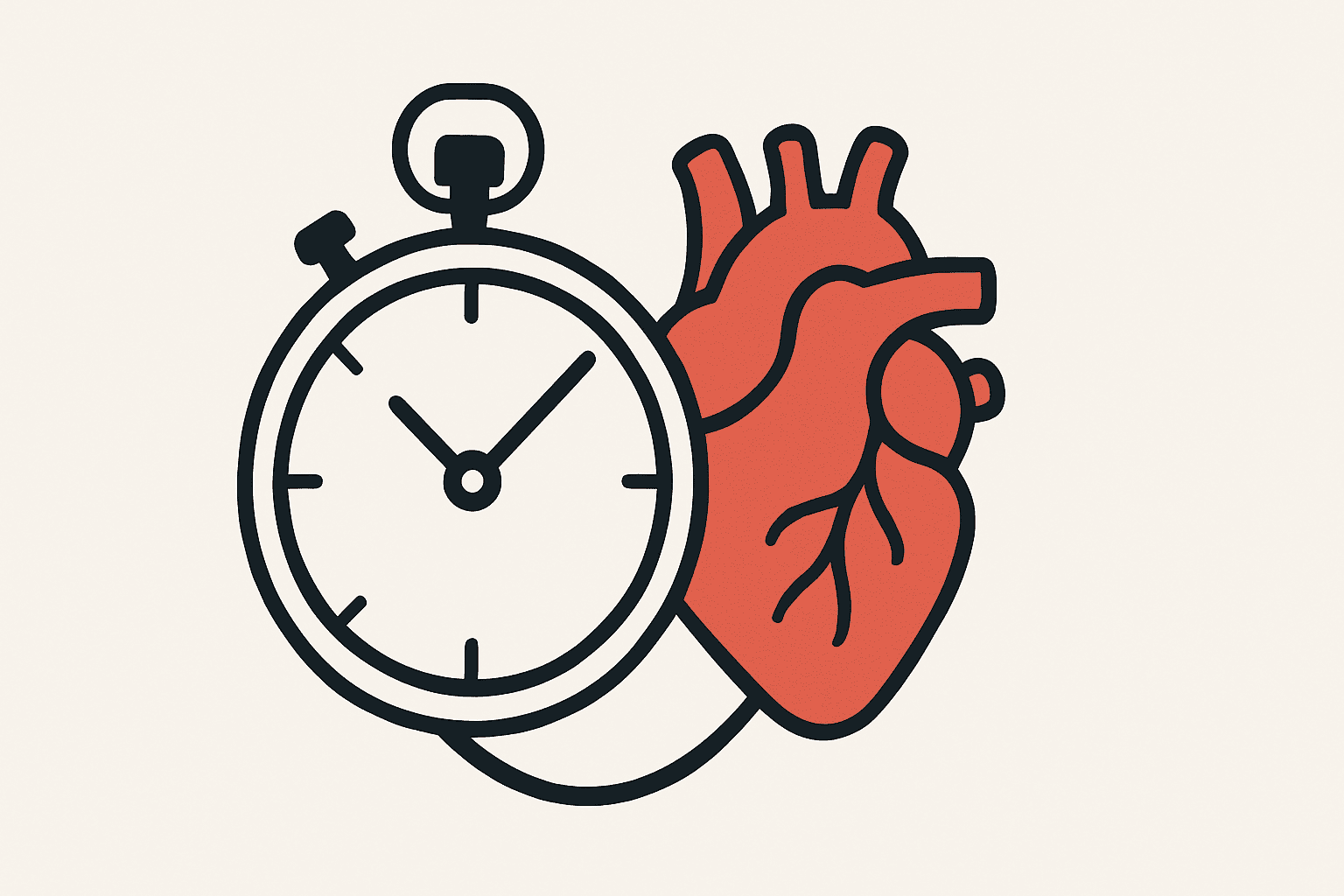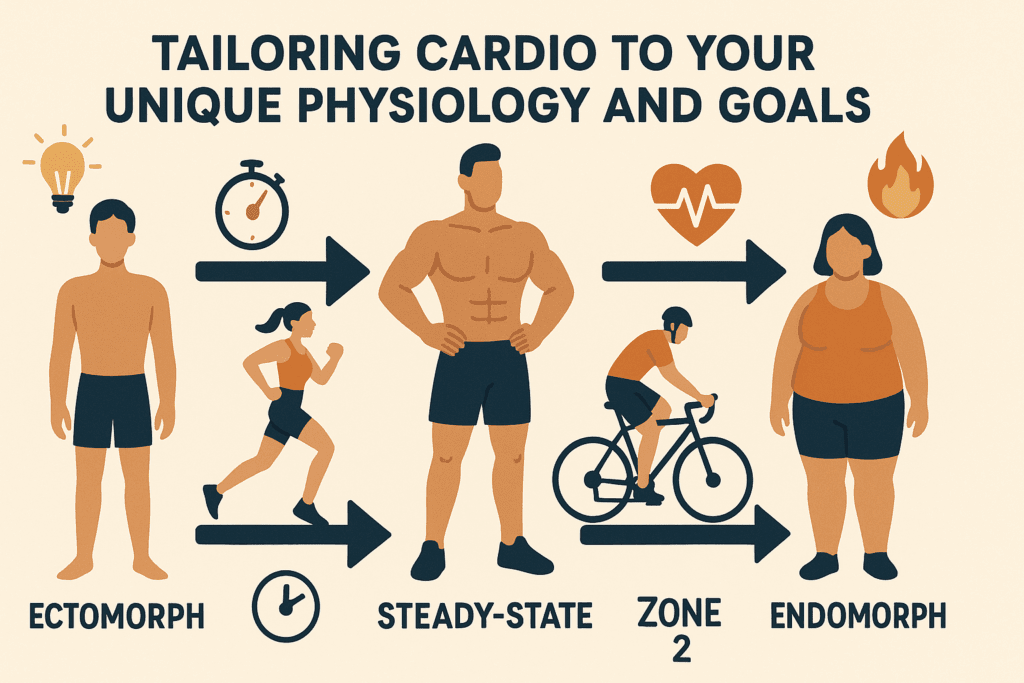Cardio exercise has long been a staple in fitness programs across the globe, but not all cardio routines offer the same results. While traditional steady-state jogging has its place, today’s science reveals that strategic, targeted forms of cardiovascular training can deliver far more effective outcomes in less time. If your goal is to enhance endurance, build stamina, burn fat efficiently, and elevate performance, then choosing the right cardio format matters more than ever. In this guide, we explore the most efficient cardio workout methods—backed by scientific evidence—and explain how they can be integrated into a sustainable routine to drive long-term fitness gains. Whether you’re an endurance athlete or a casual gym-goer, understanding the best type of cardio can help you train smarter, not harder.
You may also like: Smart Nutrition Choices for a Healthier Lifestyle: What to Know About Whole Grain Rice and Whole Wheat Rice

Why Efficiency Matters in Cardio for Fitness
In today’s fast-paced world, efficiency is king. People want workouts that maximize benefits in minimal time, without compromising quality or safety. This is especially true when it comes to cardio for fitness. The most efficient cardio workout is not necessarily the one that leaves you breathless or drenched in sweat. Instead, it’s the one that delivers consistent improvements in aerobic capacity, fat oxidation, and cardiovascular health while minimizing injury risk and training fatigue.
Scientific literature increasingly supports the idea that interval-based training and targeted intensity zones offer superior outcomes compared to long bouts of moderate exercise. Moreover, the best cardio workouts support not only physical endurance but also mental resilience, hormonal balance, and metabolic flexibility. When we evaluate cardio routines through the lens of long-term adaptation and performance, it becomes clear that a tailored approach yields far greater benefits than a one-size-fits-all model.

High-Intensity Interval Training: The Gold Standard of Efficiency
Among the most effective cardio strategies, high-intensity interval training (HIIT) consistently tops the list. This method involves alternating short bursts of intense activity with periods of active or passive rest. Studies published in journals like Medicine & Science in Sports & Exercise demonstrate that HIIT not only improves VO2 max—a key indicator of endurance—but also boosts insulin sensitivity, lowers body fat, and enhances mitochondrial density more effectively than longer steady-state workouts.
For those seeking the best form of cardio to fit into a busy schedule, HIIT stands out for its time efficiency. A 20-minute session, when performed correctly, can burn more fat and improve cardiovascular markers more than a 45-minute jog. Plus, HIIT can be performed using almost any modality—running, biking, rowing, swimming, or even bodyweight circuits—making it accessible and adaptable. That adaptability makes HIIT not just the most efficient cardio workout but also one of the best cardio for fitness programs aimed at improving overall health and athletic performance.
The Steady-State Cardio Advantage
Despite HIIT’s popularity, steady-state cardio still has a critical role in an effective endurance and stamina plan. This involves exercising at a consistent, moderate intensity—typically around 60–70% of your maximum heart rate—for an extended period, often 30 to 90 minutes. Steady-state training excels at building aerobic endurance, supporting cardiovascular health, and facilitating recovery between high-intensity sessions.
Many endurance athletes rely on this method to increase capillary density and enhance the heart’s stroke volume. It’s also ideal for beginners or individuals recovering from injury, as it is gentler on joints and muscles. While it may not be the most efficient cardio in terms of time, it’s arguably the best way to do cardio for those focusing on mental relaxation, fat burning at lower intensities, or longevity in fitness. As such, steady-state cardio remains one of the best cardio workouts when used strategically within a periodized training plan.

Zone 2 Cardio: The Hidden Gem for Endurance Gains
Zone 2 cardio is a lesser-known but profoundly effective method of training that focuses on working at an intensity just below the lactate threshold—usually where you can still carry on a conversation. This form of cardio encourages the body to use fat as its primary fuel source, builds mitochondrial density, and improves metabolic flexibility. It’s a slow-burn approach that provides deep aerobic conditioning without taxing the nervous system.
Endurance athletes often devote substantial portions of their training schedules to Zone 2 workouts because of their remarkable long-term payoff. For non-athletes, Zone 2 training can be the best type of cardio to boost heart health, reduce resting heart rate, and support energy levels throughout the day. It’s also among the most effective cardio strategies for individuals over 40, as it promotes cardiovascular improvements without overstressing aging joints and muscles. Though it may lack the thrill of high-intensity workouts, Zone 2 training proves that slow and steady truly wins the endurance race.

Hybrid Strategies: Combining Cardio Modalities for Peak Performance
No single method fits all needs, and that’s where hybrid strategies come into play. A well-rounded training plan blends multiple cardio styles—such as HIIT, steady-state, and Zone 2—to ensure comprehensive fitness development and avoid adaptation plateaus. This form of training variability also helps reduce overuse injuries by alternating movement patterns, training loads, and energy systems.
For example, an athlete might focus on Zone 2 work during base training phases, incorporate HIIT during peak cycles for race preparation, and use steady-state cardio on active recovery days. This mixed-method approach ensures consistent gains and keeps training fresh and motivating. The best cardio for fitness often involves this kind of dynamic, personalized structure that evolves with your goals, seasons, and life demands. In this way, hybrid training models become the most efficient cardio plans by promoting resilience, progress, and sustainability.

Tailoring Cardio to Your Unique Physiology and Goals
Personalized training is essential if you want lasting results. Age, genetics, fitness history, lifestyle, and specific goals all influence how your body responds to different forms of cardio. For instance, someone looking to lose fat without losing muscle might favor incline walking or rowing intervals, while a distance runner will emphasize aerobic base-building and lactate threshold development.
Understanding your unique physiology helps you choose the best cardio workouts for your situation. For women in perimenopause, steady-state or Zone 2 cardio may help manage cortisol and support hormonal balance. For time-crunched professionals, short HIIT circuits could be the most efficient cardio solution. The key is adjusting intensity, frequency, and recovery to match your body’s needs. Ultimately, the best form of cardio is the one your body can do consistently without burnout or injury.

Cardio, Hormones, and Metabolism: A Deeper Connection
Cardiovascular training isn’t just about lungs and muscles—it has profound effects on your hormonal and metabolic health. Efficient cardio helps regulate insulin, reduce stress hormones, and stimulate fat-burning pathways. For instance, HIIT stimulates growth hormone and epinephrine, both of which aid in fat mobilization and performance gains. Meanwhile, too much steady-state cardio—especially in a calorie deficit—can elevate cortisol and lead to muscle breakdown.
From a metabolic health perspective, the best cardio for fitness supports mitochondrial efficiency and insulin sensitivity. This is why rotating between intensities and training styles is so vital. If you overdo any one method, the hormonal stress can outweigh the benefits. But by adopting a thoughtful, science-backed approach, you create an environment where your metabolism thrives. This is the essence of the most effective cardio—it works with your biology, not against it.
Supporting Your Cardio with Proper Fuel and Recovery
Training without recovery is like driving a car empty. Nutrition, hydration, and rest are essential components of any cardio plan. Your body needs the right fuel before and after workouts—carbs to power activity and protein to repair tissue. For HIIT, a small pre-workout snack can improve output. For Zone 2 or steady-state cardio, a fasted state may enhance fat oxidation, depending on your metabolic goals.
Recovery goes beyond food. Sleep, active rest, stretching, and even mindfulness practices help regulate cortisol and speed up muscular repair. The most efficient cardio workout is the one that allows for full recovery—because that’s where true adaptation happens. If you ignore recovery, even the best cardio workouts will lead to plateaus, injuries, or burnout. Think of recovery as your secret weapon for fitness longevity and peak performance.

Integrating Cardio into a Holistic Performance Lifestyle
Rather than isolating cardio as a standalone task, consider how it integrates into your entire lifestyle. Cardio should complement strength training, mobility, and mental wellness. When used intentionally, it boosts cognitive function, supports sleep quality, and helps regulate mood—all of which contribute to overall performance enhancement.
The best way to do cardio in the long term is with consistency, variation, and purpose. This means scheduling it wisely, balancing high and low intensities, and respecting your body’s limits. Cardio doesn’t have to be grueling to be effective. In fact, the most efficient cardio is often the least flashy: a brisk morning walk, a 20-minute spin, or a Zone 2 treadmill session after a stressful day. When cardio becomes part of your identity rather than just a to-do list item, that’s when the transformation begins.
Frequently Asked Questions: The Most Efficient Cardio Workout for Endurance and Performance
1. How can I determine which cardio workout is the most effective for my body type and goals?
Identifying the most effective cardio depends heavily on individual physiological factors such as body composition, metabolism, recovery capacity, and training history. For example, ectomorphs might respond better to steady-state or Zone 2 training to avoid excess calorie burn, while mesomorphs often excel with high-intensity routines. To discover the best form of cardio for your body, consider metabolic testing or using a heart rate monitor to track your performance zones. Many fitness professionals recommend rotating modalities for at least four weeks and assessing results based on energy levels, sleep, and progression. Over time, this experimentation can guide you toward the best cardio for fitness outcomes aligned with your body’s unique responses.
2. Is the most efficient cardio always the one that burns the most calories per session?
Not necessarily. While calorie burn is a consideration, the most efficient cardio workout is often defined by its ability to deliver long-term metabolic and cardiovascular benefits—not just temporary expenditure. High-calorie-burning workouts like HIIT may seem optimal, but if they lead to burnout or compromise recovery, they may not be sustainable. Sometimes, the best type of cardio is the one that fits into your schedule consistently and supports hormonal balance. Efficiency should always be measured not only by effort, but by adaptability and longevity in your training regimen.
3. How does cardio efficiency impact long-term athletic performance?
Cardio efficiency plays a central role in shaping endurance capacity, recovery rate, and injury prevention—all vital for long-term athletic development. The best cardio workouts gradually improve VO2 max, lactic threshold, and mitochondrial density, which are essential for sustaining effort over time. Athletes who prioritize the most efficient cardio techniques, such as polarized training or lactate threshold intervals, often outperform peers who rely solely on intensity. Efficiency allows for higher-quality sessions over weeks and months, building durability in the muscles and connective tissues. Ultimately, mastering efficient cardio is a cornerstone of peak performance across sports disciplines.
4. What role does mental focus play in determining the best way to do cardio?
Mental engagement can drastically influence the effectiveness of a cardio routine. Boredom or lack of mental stimulation often leads people to abandon consistent cardio training. Incorporating mindfulness practices, audio guides, or goal-setting strategies into sessions can increase adherence and enjoyment. The best way to do cardio for some may involve scenic routes outdoors, music that elevates heart rate, or mentally stimulating formats like intervals that demand focus. Since mental fatigue often precedes physical fatigue, finding methods to stay cognitively engaged can make even the most efficient cardio workouts more enjoyable and productive.
5. Can the best cardio workouts change with age or hormonal shifts?
Absolutely. The best form of cardio evolves with the body’s needs, especially as hormonal profiles shift due to aging or life transitions. For example, premenopausal women might benefit more from moderate steady-state cardio, while postmenopausal individuals may respond better to low-impact resistance-integrated cardio due to changes in estrogen and joint stability. Likewise, aging men may find that the most efficient cardio is one that balances heart health with recovery, such as rowing or swimming. The best cardio for fitness in midlife and beyond must be adaptable and grounded in current physiological realities—not just past preferences.
6. How do emerging technologies influence the most efficient cardio workout strategies?
Wearable tech, smart treadmills, and AI-guided fitness apps are transforming how we approach cardio for fitness. These tools allow real-time tracking of heart rate zones, recovery time, sleep quality, and training load, helping users refine their cardio routines with precision. Data-driven personalization makes it easier to discover the best type of cardio for your goals and adapt as your metrics evolve. Apps can even suggest changes based on heart rate variability (HRV) or readiness scores, making each workout smarter. The integration of technology is quickly redefining what qualifies as the most efficient cardio workout in the modern training landscape.
7. Is it possible to overdo even the best cardio workouts?
Yes—and it happens more frequently than people realize. Even the most efficient cardio workout can become detrimental when volume and intensity are pushed too far without proper recovery. Chronic overtraining can lead to elevated cortisol, sleep disturbances, weakened immunity, and stalled progress. The best form of cardio must include thoughtful periodization, deload weeks, and days devoted to active recovery. The best way to do cardio long-term is with sustainability in mind—balancing challenge with recovery to prevent burnout and preserve results.
8. How can I use cardio to support cognitive function and mental clarity?
Cardio training is not just a physical tool—it’s also one of the most effective cognitive enhancers available. Research shows that consistent aerobic exercise stimulates brain-derived neurotrophic factor (BDNF), which supports memory, learning, and mood regulation. Choosing the best cardio for fitness may depend on your mental goals as much as physical ones. Zone 2 cardio, for example, offers a meditative rhythm that many find ideal for stress relief and creative thinking. Meanwhile, short bursts of high-intensity exercise have been shown to improve focus and executive functioning. If mental clarity is your goal, the most efficient cardio might be the one that leaves your mind as refreshed as your body.
9. What’s the best way to do cardio in a strength-based program without losing muscle?
When building or maintaining muscle mass is a priority, integrating cardio requires precision. The best type of cardio in this scenario is often low- to moderate-intensity performed after strength training or on separate days. Fasted Zone 2 cardio in the morning can help optimize fat burning without interfering with muscle protein synthesis. Additionally, non-impact cardio such as cycling or sled pushes can preserve joint integrity and minimize muscle breakdown. Balancing cardio and strength requires nutrient timing, progressive overload, and enough recovery—but when done correctly, the best cardio workouts actually support hypertrophy by improving work capacity and circulation.
10. How can I avoid plateaus when following a cardio-focused fitness plan?
Cardio plateaus often occur when your body adapts to repeated stress without variation in stimulus. To overcome this, vary your tempo, terrain, duration, and type of cardio every few weeks. Periodizing your routine—such as alternating between base-building, peak intensity, and recovery phases—keeps the body challenged. One of the most effective cardio techniques for breaking a plateau is reverse linear progression, where you shorten workout length but increase intensity. Adding strength circuits or skill-based elements like jump rope or agility drills can also reawaken progress. Ultimately, the most efficient cardio workout is one that evolves with your development and keeps you mentally and physically engaged.
Conclusion: Elevate Your Endurance with the Most Effective Cardio Approach
The pursuit of fitness, stamina, and performance doesn’t require endless hours of running or complicated routines. Instead, it demands intention, personalization, and evidence-based strategies. By understanding the science behind different cardio modalities, you can choose the best type of cardio for your goals and lifestyle. Whether it’s the metabolic punch of HIIT, the calming rhythm of steady-state cardio, or the mitochondrial magic of Zone 2 training, each method has a place in your fitness journey.
When blended with thoughtful nutrition and recovery, these cardio strategies become powerful tools for transforming not just your body but your entire approach to health. The best cardio workouts aren’t just about burning calories—they’re about building a resilient, adaptable, and high-performing body. So rather than chasing quick fixes or trendy fads, commit to a cardio routine rooted in science and self-awareness. That’s the best way to do cardio for fitness that lasts a lifetime.
Was this article helpful? Don’t let it stop with you. Share it right now with someone who needs to see it—whether it’s a friend, a colleague, or your whole network. And if staying ahead on this topic matters to you, subscribe to this publication for the most up-to-date information. You’ll get the latest insights delivered straight to you—no searching, no missing out.
Further Reading:
The ‘best’ cardio workout for a healthy heart
20 cardio exercises to do at home with minimal equipment, from beginner to advanced

